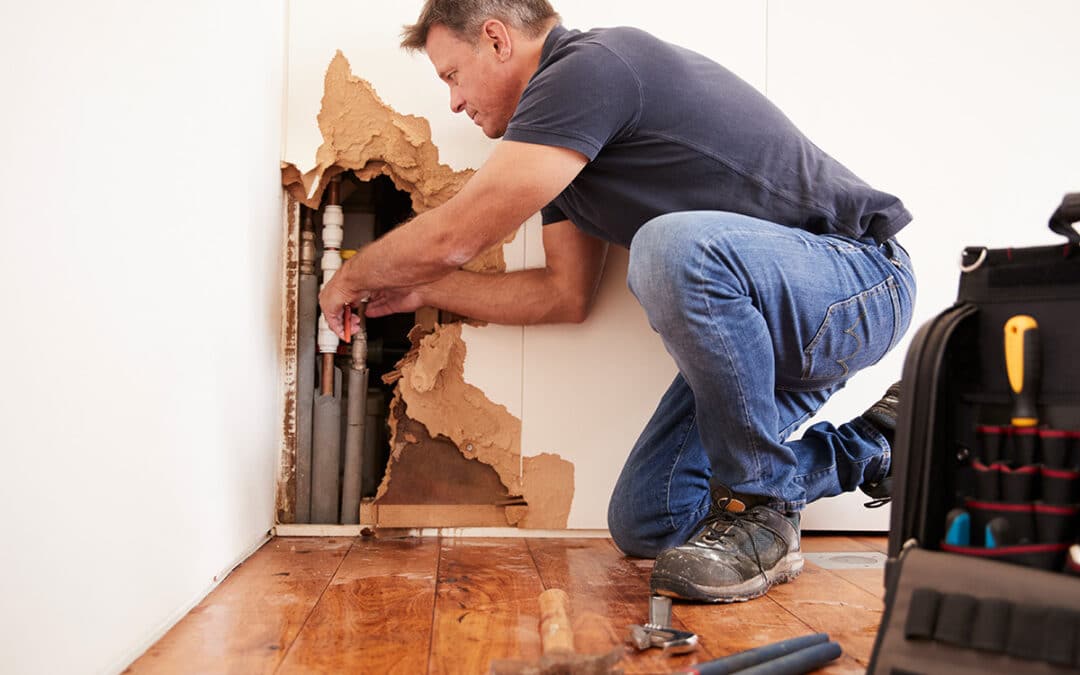Despite your best efforts to keep the water at bay, sometimes Mother Nature has other plans. Flooding, leaks, and other disasters can wreak havoc on your home if not quickly taken care of. We’ve rounded up 10 ways you can tackle water damage in order to minimize damage costs and protect your property with this vital workflow guide!
Identify the Source
You should look for signs such as discolored walls, damp spots on carpets or floors, musty odors, and mold growth. Other sources may include roof leaks, burst pipes and plumbing issues, flooding from outside sources like heavy rains or storms, and condensation caused by high humidity levels indoors.
Shut Off the Water Supply
Shutting off the main water line or any other sources of running water can prevent further flooding and costly repairs while helping to reduce mold growth. Turning off electrical appliances and unplugging electronics near a potential source of water damage can also protect them from short circuits.
Remove All Damaged Items
Removing all damaged items can help reduce mold growth and save them from being ruined beyond repair. It can also help dry out your space which will speed up the restoration process significantly.
Extract Any Standing Water
This can be done by using a wet/dry vacuum, mops and buckets, or even towels to absorb as much liquid as possible. Removing standing water prevents any potential electrical hazards that may arise from contact with electricity outlets or appliances near a source of flooding.
Dry Wet Areas and Furniture
Using fans and air conditioners to dry out wet areas and furniture is a great way to help prevent further water damage. By running fans or air-conditioners on low, you can circulate the air in your home which can help evaporate any remaining moisture. Placing dehumidifiers around your space will also help absorb excess moisture in the air, speeding up drying time even more.
Sand Down Your Damaged Hard Wood
Sanding down any areas that have been affected by water helps remove excess moisture and prevents further damage from occurring. Sanding should always be done carefully, using the right tools and techniques to ensure that no further harm is caused while restoring your hardwood floors back to their original condition.
Replace Or Repair Any Structural Damage
It’s important to inspect all affected areas for signs of cracking, bulging, sagging, mold growth or other types of water-related damage before attempting any repairs or replacements. In some cases you may need to replace entire sections of walls and flooring due to severe water damage, however, it is best practice to repair the area first unless it has been deemed unsafe by a professional inspector.
Check the Ceilings
Signs of water damage on ceilings include discolored spots or patches, peeling paint, and sagging sections which may indicate a structural issue that needs to be addressed right away. Additionally, you should also look out for mold growth as this could pose a health hazard if not taken care of properly.
Re-Caulk Areas in Need
Re-caulking can be done with either silicone or acrylic caulk depending on where it needs to be applied and how much flexibility is required for the job at hand. When re-caulking a damaged area, make sure that all old caulk has been removed first before applying new material in order to ensure proper adhesion and prevent any future leaks.
Install Water Detection Devices
Water detection devices come in many different types, such as those designed for basements, attics, garages, and other vulnerable areas around your property. They are easy to install and require minimal maintenance once they are set up properly.
Prepare to Combat Water Damage
Water damage can be a major problem for any home and it’s important to take the necessary steps to ensure that your space is safe from further harm. By following these simple tips for coping with water damage, you should be able to prevent future water damage and get back on track with restoring your property as quickly as possible.

